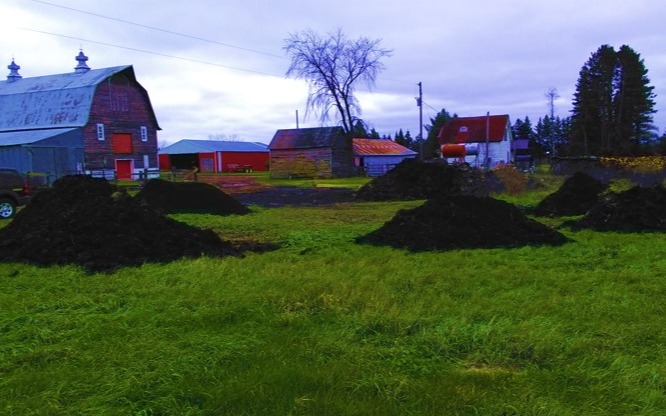According to Neal deGrasse Tyson, we are “the stuff of stars”. Specifically, “the atoms of our bodies are traceable to the stars that manufactured them…we are biologically connected to every living thing in the world.” Therefore, we are also the stuff of trees, and they of us. This connection both simplifies the truth and complicates the story of wood reuse and recycling. The truth is that all wood is 100 percent recycled material. That is the nature of renewable materials. It’s in the definition. If you put trees in a closed environment, over time they will grow, live, die and re-grow again within that closed system; recycling themselves ad infinitum. The presence of other species, especially animals, aids this process. This closed system is called earth.
To a certain extent this simple truth of how “renewable” and “recycled” are linked complicates the green story of wood because the definitions of reuse and, in particular, recycling are generally based on the use of inorganic materials such as steel, plastic and aluminum. So the answers to reuse and recovery questions, as they relate to wood products, are often “it depends,”or involve looking at the problem from a completely different perspective. Today’s consumers also tend to view recyclable as superior to renewable, when in fact renewable is a subset of recycled; renewable is a natural form of recycling.
Currently, the United States ranks 1st and Canada 3rd in total global wood production. Together these two countries produce about 28 percent of the world’s supply of industrial roundwood. The U.S. produces an average of over 143 million (short) tons of wood products annually. Wood product companies in the U.S. and Canada utilize nearly 99 percent of their manufacturing inputs (pre-consumer recycling) at sawmills and at secondary wood processors such as furniture and cabinetmakers. This near-zero wood-waste within the major manufacturing sectors reflects decades of private and public effort to improve manufacturing processes, develop new products, and add value to wood as a versatile raw material.
The challenge for the future expansion of wood recovery is to go beyond pre-consumer recycling and undertake opportunities to increase utilization of wood classified as post-consumer, including waste from Municipal Solid Waste (MSW) and Construction & Demolition (C&D) collection sites. For some wood products, post-consumer recycling is already commonly occurring, and there are opportunities for greater marketplace recognition and replication of best practices. In other situations, there are significant barriers to expanded wood recovery, reuse and recycling. Making progress in these situations is likely to require new and expanded partnerships, industry innovations, and an appetite for addressing the unique characteristics of wood as a renewable, and therefore naturally recyclable, material.
- Lead AuthorHowe
- DateMay 2013
- CategoryBuilding, Consumption, Environmental, Forest products, Management, Waste, Wood
- Project FileDownload


.jpg)



.png)